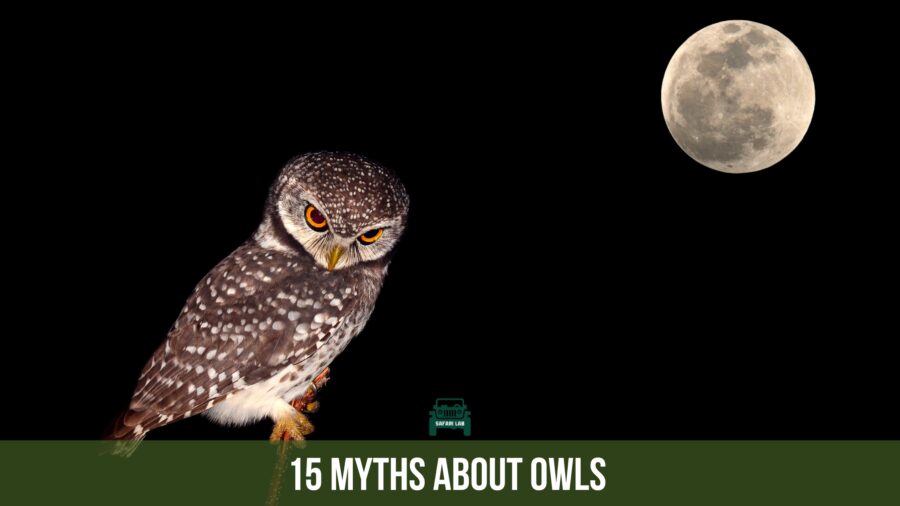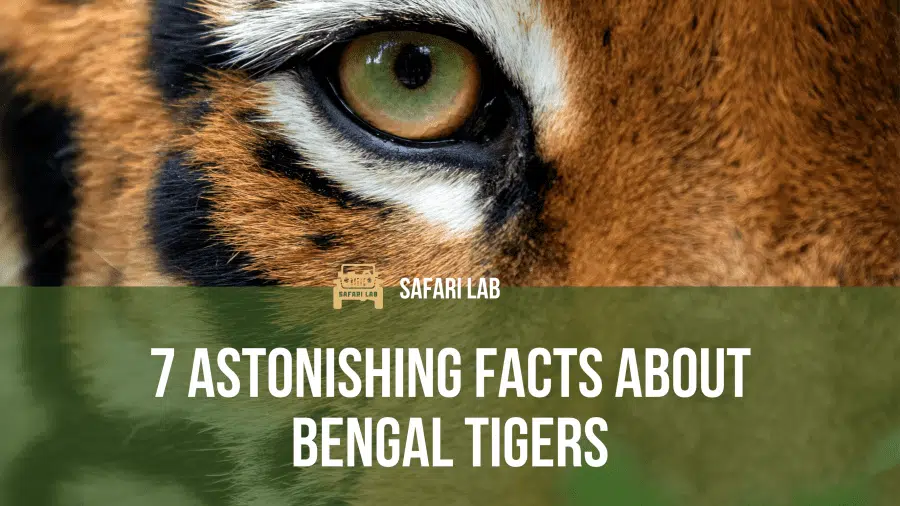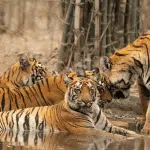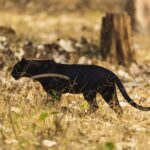Lets bust some myths about owls.
The forest is silent. Moonlight filters through the canopy in silver ribbons. And then—without a whisper of wingbeat—it arrives. An owl. Eyes like amber lanterns, head pivoting as if possessed, it surveys the world with ancient calm. To some, this is a sign. To others, a warning. But to the owl? It is simply hunting.
Owls have mesmerized humankind for millennia. They appear in ancient cave art, in sacred scriptures, on currency, in nightmares. They’ve been praised as wise, cursed as death omens, and blamed for everything from stolen souls to ruined harvests. In some corners of the world, an owl’s hoot heralds divine knowledge. In others, it’s a sure sign someone is about to die.
But how did a solitary, nocturnal bird inspire so many wild tales?
The truth is, owls are the perfect blank canvas for human projection. They’re active when we sleep. They move without sound. They see in the dark. They appear, then vanish—specters with feathers. In a world where most animals operate in predictable rhythms, owls defy the rules. And anything that breaks nature’s rhythm has long been considered magical… or malevolent.
This article will unspool the threads of 25 common owl myths—some rooted in ancient belief, others born from misunderstanding—and lay them side-by-side with what science actually says. Along the way, we’ll cross continents, peek into old rituals, decode superstition, and meet owls that are more complex—and more fascinating—than the folklore gives them credit for.
So open your eyes wide. Like an owl. There’s truth to hunt.
Myth #1: Owls Are Bad Omens and Bring Death
The Belief: Across many cultures, owls are seen as harbingers of death. A hoot near your home? Someone’s going to die. An owl perched on your roof? Get the priest.
Where It Comes From: This myth stretches back thousands of years. In ancient Rome, the hoot of an owl was said to predict the deaths of emperors—Julius Caesar, Augustus, and others reportedly heard owl cries before their demise. In Egyptian and Mesopotamian texts, owls were linked with the underworld. The belief echoed through African, Indian, and Native American traditions, where owls were often seen as messengers between life and death.
The Truth: Owls vocalize to mark territory or find a mate—not to announce a funeral. Their nocturnal nature and ghostly calls sparked superstition, but biologically, they’re just efficient night hunters.
Reality Check: They aren’t death’s messengers. They’re mouse assassins with bad PR.
Myth #2: Owls Are Wise
The Belief: Owls are the very symbol of wisdom. They wear their feathers like scholarly robes and seem to sit in judgment of the world. Ask any child to name a “smart” animal, and the owl gets top billing.
Where It Comes From: One of these myths about owls took flight in ancient Greece, where the Little Owl (Athene noctua) was sacred to Athena, the goddess of wisdom. It perched on coins, temples, and shields—marking both intellect and protection. The association stuck, spreading across Europe and into modern pop culture: from Harry Potter’s Hedwig to graduation caps and scholarly mascots.
The Truth: Owls are remarkable predators with excellent night vision and hearing—but they’re not intellectual heavyweights. Compared to crows, ravens, and parrots, owls score lower on problem-solving, tool use, and social learning. Their brains are optimized for stealth and survival, not riddles or philosophy.
Reality Check: Wise-looking? Absolutely. But in a bird IQ contest, the owl might not make the podium.
Myth #3: All Owls Hoot
The Belief: If it’s an owl, it hoots. That’s how you know one’s nearby—deep, haunting hoots echoing through the night. It’s their signature sound.
Where It Comes From: Popular culture has drilled the hoot into our heads—from spooky soundtracks to Halloween decorations. And some owls, like the Great Horned Owl or Indian Eagle Owl, do in fact hoot. But this is just one voice in a far more varied choir.
The Truth: Not all owls hoot. Some screech, like the barn owl with its blood-curdling call. Others whistle, bark, click, or even chatter. Each species has its own vocabulary suited to its habitat and behavior. The hoot is just one tool in the toolbox.
In Sri Lankan folklore, the eerie, human-like scream heard at night in the hill forests is attributed to the legendary “Devil Bird” or Ulama. Locals long believed that hearing this dreadful shriek was an omen of death. The call—often likened to a terrified woman or child—was rumored to echo from spirits or witches hidden in the forest.
Modern ornithology, however, has revealed a more grounded truth: the Devil Bird is likely the spot‑bellied eagle‑owl, a large nocturnal raptor whose booming, haunting call perfectly matches the legend. The folklore took shape because these owls roar during breeding season—precisely when communities were more likely to suffer illness or misfortune—fusing coincidence with superstition. Far from a cryptid or omen, the Devil Bird is simply a ghostly-voiced owl whose misunderstanding became myth
Reality Check: Not every owl sounds like a ghostly monk in a cathedral. Some sound like they belong in a horror film—or a jungle rave.
Myth #4: Owls Can Turn Their Heads All the Way Around
The Belief: Owls can rotate their heads in a full 360-degree circle. Like feathered exorcists, they can twist their necks in impossible directions without missing a beat.

Where It Comes From: Owls often appear to spin their heads like supernatural beings, especially when staring directly backward. Since their enormous forward-facing eyes never move, their dramatic neck-turning adds to the illusion of total rotation.
The Truth: Owls can’t turn their heads all the way around—but they do manage an impressive 270 degrees in either direction. They pull this off thanks to 14 neck vertebrae (twice as many as humans) and a unique vascular system that prevents blood flow from being cut off during rotation.
Reality Check: Not quite a full circle—but pretty close. Enough to keep an eye on everything… especially you.
Myth #5: Owls Fly Silently Because They’re Magical
The Belief: Owls move through the air without making a sound. For centuries, people believed this ghostly silence meant they were supernatural—spirits, witches, or messengers from another realm.
Where It Comes From: Imagine being a medieval farmer and seeing a huge bird pass inches from your head without a whisper of wingbeat. Ancient cultures, from Norse to Navajo, viewed silent flight as eerie, otherworldly—proof that owls belonged to the night’s mysteries.
The Truth: Owl silence is a marvel of natural engineering, not magic. Their wings have specialized feathers with serrated edges, soft fringes, and a downy coating that muffles sound. Combined with their slow, gliding flight style, this makes them nearly undetectable to prey—and to human ears.
Reality Check: Their silence isn’t sorcery—it’s science. Predators this precise don’t need spells. Just feathers.
Myth #6: Owls Can See in Complete Darkness
The Belief: Owls have supernatural night vision. They can see in total darkness, like little winged X-ray machines gliding through the void.
Where It Comes From: Owls are famously active at night, and their enormous, glowing eyes give the impression that they pierce the blackest shadows. Combine that with their silent movement, and it’s no wonder they’re believed to have perfect night sight.
The Truth: Owls have exceptional low-light vision, but they can’t see in absolute darkness. Their retinas are packed with rod cells—ideal for detecting movement in dim light—but they still need some light to see. Unlike bats, owls don’t echolocate, so they rely on a combination of vision and hyper-sensitive hearing to hunt.
Reality Check: Brilliant in the dark, yes. But even owls need a little moonlight to work their magic.
Myth #7: All Owls Are Nocturnal
The Belief: Owls are creatures of the night—emerging only under the cover of darkness and vanishing by sunrise. If you see one in daylight, something’s wrong.
Where It Comes From: Most owls are night hunters, and their association with the moon, darkness, and silence has shaped cultural beliefs for centuries. Their ghostly presence at night has fed myths of mystery and magic.
The Truth: Not all owls are creatures of the night. Some species are diurnal (active during the day), and others are crepuscular (most active at dawn and dusk). For example, the Forest Owlet, which can be seen in Thatekkad bird sanctuary and Burrowing Owl regularly hunt in full daylight. Behavior depends on prey availability, habitat, and seasonal light patterns—not a universal nocturnal curse.
Reality Check: An owl in the daylight isn’t broken. It’s just on its own schedule.
Myth #8: Owls Only Eat Mice and Rats
The Belief: Owls are rodent specialists—tiny mouse assassins that exist solely to control rat populations.
Where It Comes From: It’s easy to see why this myth sticks. Owls are often photographed with rodents in their talons, and many farmers encourage their presence specifically to keep fields free of rats and mice.
The Truth: While small mammals are a staple for many owl species, their diet is far more varied. Depending on the species and habitat, owls eat insects, frogs, birds, bats, fish, and even other owls. Some, like the Asian Barred Owlet, go after beetles and grasshoppers, while Pel’s Fishing Owl specializes in—yes—fish. And analysis of owl pellets reveals just how diverse their meals can be.
Reality Check: They love a mouse, sure. But they’re not picky—and dinner might hop, buzz, swim, or fly.
Myth #9: Owls Are Witches in Disguise
The Belief: In folklore across parts of South America, Eastern Europe, and Africa, owls aren’t just birds—they’re witches in feathered form. Some believe owls are witches who transform to travel unnoticed, spy on people, or curse their enemies.
Where It Comes From: Owls’ nocturnal habits, silent flight, and piercing eyes made them prime suspects in pre-scientific societies. In Mexican folklore, the Lechuza is a shape-shifting witch-owl that swoops down to steal children or souls. In Slavic tales, owls are witches’ messengers—or the witches themselves. These beliefs were often used to explain strange nighttime sounds or misfortunes.
The Truth: There’s no evidence of witches hiding behind feathers. Owls are masterfully evolved predators, not sorcerers. Their eerie appearance and stealthy flight make them easy scapegoats—but the science stops at biology.
Reality Check: They’re not witches. They’re winged legends haunted by human imagination.
Myth #10: Owls Are Loners
The Belief: Owls are solitary creatures—perched alone, brooding in silence, completely disconnected from social life. If you see two together, it’s a miracle.
Where It Comes From: Most owl sightings involve a single bird, and their quiet, elusive nature reinforces the idea that they prefer life alone. Unlike parrots or crows, they’re not often seen in flocks or vocalizing in groups.
The Truth: While many owl species are indeed solitary hunters, they’re not anti-social. During breeding season, owls form strong pair bonds and become quite vocal, engaging in duet calls and coordinated parenting. Some species, like the Short-eared Owl, even form loose colonies when nesting or roosting communally in winter.
Reality Check: They may hunt alone, but they fall in love, raise chicks, and sometimes even hang out in crowds—quietly, of course.
Myth #11: Owls Make Great Pets
The Belief: With their big eyes and calm demeanor, owls seem like the perfect exotic pet—mysterious, beautiful, and maybe even magical. Just ask anyone who’s seen Harry Potter.
Where It Comes From: Pop culture has glamorized owl ownership. The image of Hedwig, perched nobly on Harry’s arm, made it seem noble and attainable. In some cultures, especially in parts of South Asia and the Middle East, owls are also kept for spiritual rituals or status symbols.
The Truth: Owls make terrible pets. They’re wild animals with specialized diets (often requiring live prey), large territorial needs, and powerful talons that can do real damage. They are also illegal to own in many countries—including India—under wildlife protection laws. Captive owls suffer from poor care, malnutrition, and severe stress.
Reality Check: Owls aren’t pets. They’re wild creatures that belong in forests, not cages—or dorm rooms.
Myth #12: Seeing an Owl Is a Message From the Spirit World
The Belief: An owl sighting—especially unexpected or up close—is a sign from the beyond. In many traditions, it’s said to be a message from ancestors, spirits, or otherworldly forces, often interpreted as a warning, a calling, or a moment of transition.
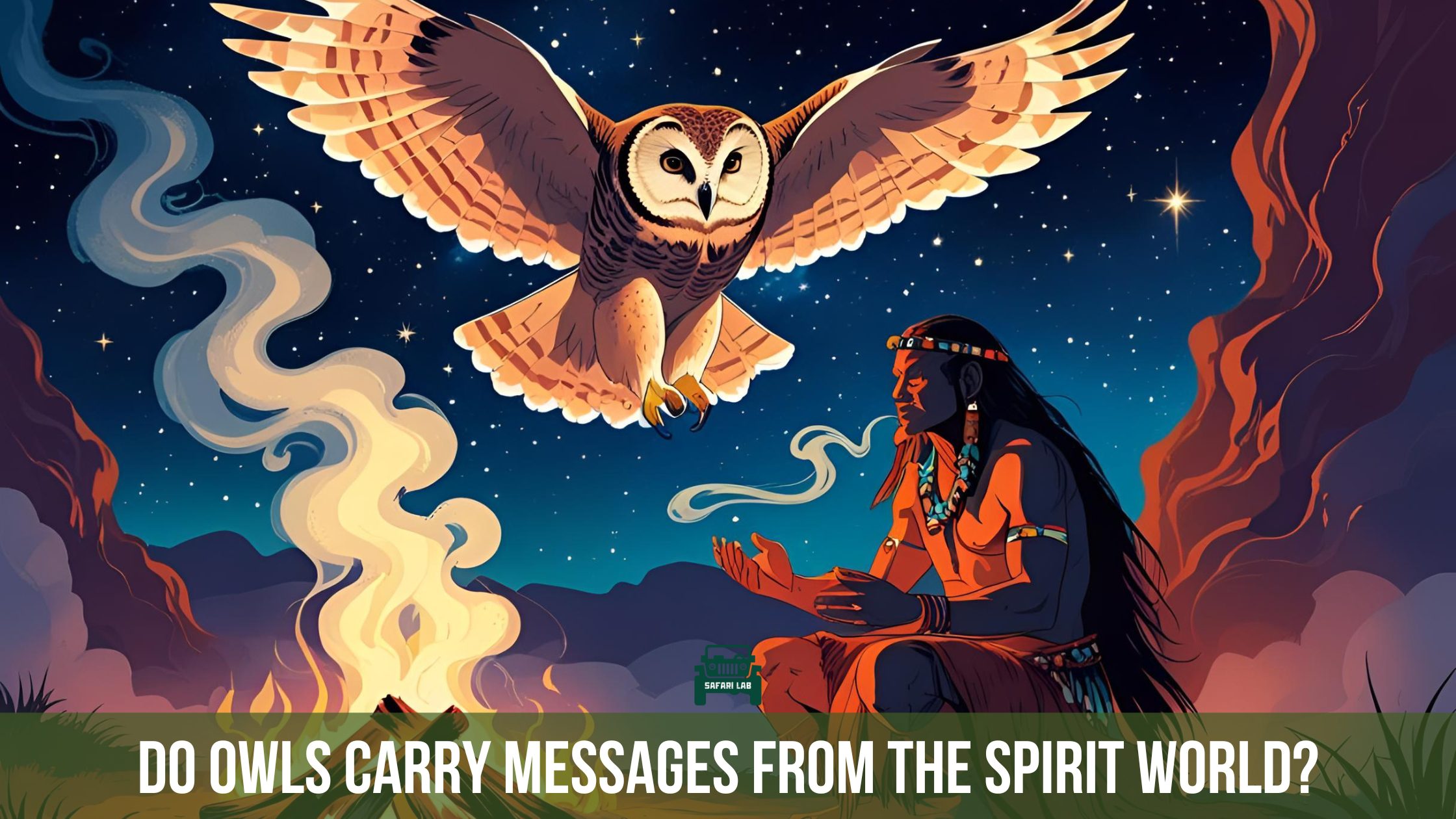
Where It Comes From: In Native American beliefs, especially among the Hopi, Apache, and Navajo, owls are closely linked with spirits of the dead or underworld guardians. In African and Australian Aboriginal traditions, owls are seen as messengers between the physical and spiritual realms. Even in Celtic and Shamanic practices, the owl is revered as a guide through the darkness—literal and metaphorical.
The Truth: While the symbolism is powerful, the reality is simpler: owls are shy, elusive birds. Spotting one feels rare and significant—especially because their silent flight and camouflaged feathers make encounters feel uncanny. But it’s not a ghost whispering. It’s an owl doing owl things.
Reality Check: Spirit guide or not, an owl sighting reflects your surroundings—not your afterlife.
Myth #13: Owls in Dreams Foretell Death or Betrayal
The Belief: Dreaming of an owl is rarely seen as a good sign. Across many cultures, it’s associated with death, betrayal, illness, or spiritual unrest. A silent owl in a dream? Ominous. An owl flying toward you? Worse.
Where It Comes From: In Middle Eastern, South Asian, and Latin American dream lore, owls represent hidden enemies or forewarnings of grief. In Greek tradition, however, an owl in a dream might symbolize wisdom or revelation—especially if the dreamer is undergoing a period of uncertainty or transformation. The owl’s nocturnal nature and association with secrets makes it a perfect dream symbol for the subconscious.
The Truth: Dreams reflect internal anxieties, desires, and fears—not the future. An owl might appear in your dreams after seeing one in a film, reading a myth, or experiencing personal turmoil. It’s not a prophecy. It’s a symbol—and symbols are personal.
Reality Check: That owl in your dream isn’t predicting your doom. It might just be your brain’s night shift supervisor.
Myth #14: Owl Body Parts Cure Illness and Grant Magical Powers
The Belief
In traditional medicine and occult rituals across India, Africa, and South America, owl parts are believed to cure diseases or possess mystical powers. Their eyes, bones, feathers, hearts, and even blood are said to treat asthma, epilepsy, and rheumatism—or to enhance spiritual strength, control others, or ward off evil.
Where It Comes From
This belief is rooted in centuries-old folk practices and ritual medicine. In Indian black magic traditions, particularly tantric rites, owl parts are used in potions, charms, and ceremonies. These rituals claim to attract wealth, improve health, or curse enemies. Similar beliefs exist in African ethnomedicine, where owl parts are used in amulets, smoked for visions, or buried under homes for protection.
The Truth
There is no scientific basis for the healing or magical use of owl parts. These beliefs are entirely cultural and unsupported by medical or pharmacological evidence. The demand for owl body parts contributes to wildlife trafficking, often targeting rare and protected species.
Reality Check
Owl parts don’t heal or enchant—they endanger species and violate wildlife protection laws.
Myth #15: Owls Are Sacrificed During Diwali for Wealth & Prosperity
The Belief
Some believe that sacrificing an owl on the night of Diwali, particularly during Amavasya, can bring blessings from Goddess Lakshmi and guarantee wealth, protection, or mystical power.
Where It Comes From
While the owl is symbolically associated with Lakshmi in Hindu mythology, this reverence has been distorted in certain occult and tantric practices. These rituals claim that specific owl body parts—like the heart, feathers, or skull—can invoke divine favor. Ahead of Diwali, reports consistently emerge of owls being trapped and traded illegally across India, especially in northern and western states.
The Truth
Every owl species in India is protected under the Wildlife Protection Act, 1972. Killing or trafficking owls is illegal and punishable by law. Despite this, underground markets for ritual sacrifices persist, driven by superstition and misinformation.
Reality Check
Spiritual prosperity does not come from animal cruelty. These practices are not religious—they’re illegal, unethical, and ecologically destructive.
The Spiritual Meaning of Owls: White Owls, Barn Owls, and Night Sightings
Across many spiritual belief systems, owls are seen not simply as birds, but as powerful symbols—messengers between worlds, guides in times of darkness, and gatekeepers of inner truth. These beliefs are particularly strong when the owl appears at night, alone and uninvited, seeming to emerge from the shadows with purpose. While interpretations vary, common themes include intuition, transformation, hidden knowledge, and spiritual awakening.
Seeing an Owl at Night: A Message from the Shadows
In many spiritual traditions, especially those rooted in mysticism, shamanism, or nature-based belief systems, encountering an owl at night is considered significant. Some interpret it as a personal message from the universe or spirit world. The owl’s nocturnal habits and silent flight create an atmosphere of mystery, and seeing one during a quiet walk, dream, or unexpected moment is believed by some to be a sign of inner awakening.
People often describe these encounters as signals to look inward. Owls are said to bring attention to what is unseen or ignored—whether in one’s environment or within the self. They may represent an upcoming change, the need to trust one’s intuition, or an invitation to explore spiritual truths that lie just beyond the surface. The sense of being “watched” or “noticed” by an owl is often described as a spiritual nudge.
White Owl Spiritual Meaning
Among owl encounters, the appearance of a white owl is especially charged with spiritual significance. White owls are commonly associated with purity, higher consciousness, and protection. In some belief systems, a white owl is seen as an ancestral messenger—bringing insight from past generations or divine sources. For others, it represents clarity during a time of emotional fog, offering guidance when the path ahead is uncertain.
Spiritually, the color white is often linked to truth, healing, and transformation. When combined with the owl’s symbolism, a white owl may be interpreted as a powerful sign to shed illusions, embrace personal growth, and reconnect with inner wisdom. It may also be seen as a harbinger of change—not in a fearful sense, but as a necessary evolution in one’s spiritual or emotional life.
Barn Owl Spiritual Meaning
The barn owl, with its pale feathers, dark eyes, and unearthly screech, holds a distinct place in spiritual lore. Its almost ghost-like appearance has long made it a symbol of the in-between—a creature that moves between the known and the unknown. In many traditions, the barn owl is viewed as a spirit guide, especially for those navigating deep inner work or moving through fear and emotional darkness.
Some interpret a barn owl’s appearance as a call to embrace deeper perception, to listen beyond words, and to examine what’s hidden within oneself or others. Its association with death in some cultures does not always imply literal death, but rather symbolic death—of old habits, false beliefs, or spiritual blockages. The barn owl is often viewed as a guide through transformation.
Owl Symbolism in Tarot and Mystical Practice
In the world of tarot and oracle readings, owls are frequently featured in association with themes of intuition, hidden knowledge, and spiritual discernment. Owls commonly appear on cards like the High Priestess, which embodies deep intuition, secrecy, and feminine power; the Moon, which deals with illusion and subconscious truth; and even Death, which signifies transformation and rebirth rather than finality.
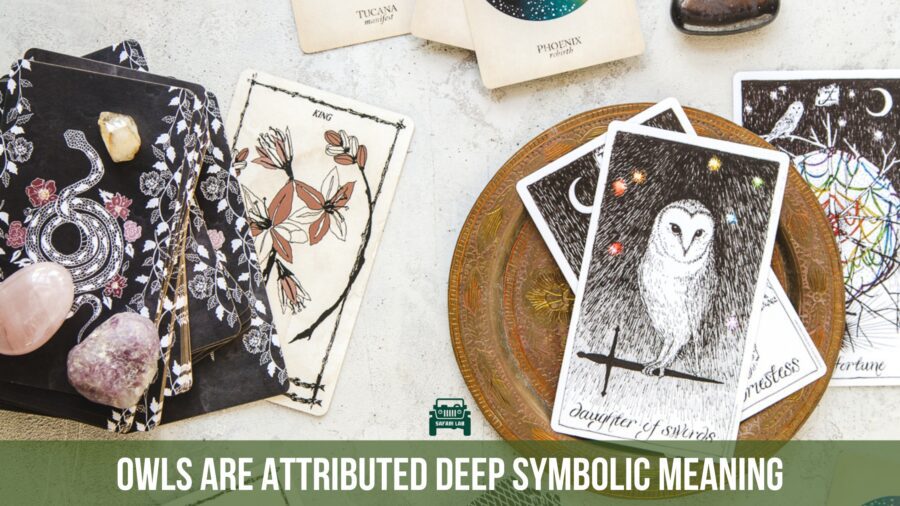
In this symbolic framework, an owl is a companion through the unknown. It invites the seeker to move beyond surface appearances and listen to the messages buried beneath logic and noise. When an owl appears in a reading—whether literal or symbolic—it is often interpreted as a sign that one must pause, reflect, and trust the deeper knowing within.
The Modern Context: Online Spirituality and Personal Encounters
On spiritual forums and personal blogs, people frequently describe encounters with owls as moments of eerie calm, clarity, or emotional significance. These stories often describe seeing an owl after asking a difficult question, experiencing a loss, or preparing for a major life decision. Though anecdotal, such reports reflect the continued influence of owl symbolism in contemporary spiritual thought.
While skeptics attribute these interpretations to coincidence or projection, for many, the meaning is deeply felt. Whether as a literal bird or a metaphorical messenger, the owl continues to occupy a space of quiet reverence in human consciousness—especially at night, when silence makes room for messages we might otherwise miss.
Owls in Art, Myth & Film: More Than Meets the Eye
From ancient cave walls to CGI-drenched cinema screens, owls have long fluttered through the corridors of human creativity. Their stillness, symmetry, and spectral presence have made them powerful visual motifs across time and media.
Ancient Greece: The Owl of Athena
In ancient Athens, the Little Owl (Athene noctua) was sacred to Athena, the goddess of wisdom. It appeared on coins, pottery, and city emblems—symbolizing insight, intelligence, and strategic power. These “owl coins” (tetradrachms) were even believed to bring Athena’s favor to warriors heading into battle.
Hieronymus Bosch: The Owl of Menace
By the 15th century, the owl’s reputation darkened. Dutch painter Hieronymus Bosch painted owls into scenes of moral decay—such as The Haywain and Ecce Homo—where the bird lurks in shadows, symbolizing ignorance, hidden evil, or spiritual blindness. In his work, the owl isn’t a wise observer but a silent accomplice to human folly.
Picasso’s Owl: Muse and Mischief
During his Paris years, Pablo Picasso famously kept a pet owl in his studio. The bird reportedly bit him and tore through his workspace—wild, unpredictable, and ever-watchful. For Picasso, the owl became a symbol of creative unrest and primal energy, appearing repeatedly in his ceramics and sketches.
Indigenous and African Cultural Symbolism
Among Anishinaabe and other Native American tribes, owls are viewed with complex reverence. Known as Gookooko’oo, the owl may signal a message from the spirit world, especially warnings or transitions. Similarly, in many African traditions, owls are treated with fear and respect, believed to be spiritual messengers—sometimes protectors, sometimes omens, depending on context.
Ritual Art in China and Egypt
In ancient Chinese ritual bronzes, owls appear as supernatural guardians. Their stern gaze and sculpted plumage suggest not mere decoration but a spiritual function—watchers of the in-between. In ancient Egyptian pottery and funerary art, the owl symbolized death, silence, and the divine night.
Cinema & Modern Storytelling
On screen, owls carry their layered symbolism into modern myths. In The Sword in the Stone, Archimedes is the classic wise guide—gruff, sarcastic, but brilliant. In Harry Potter, Hedwig becomes a visual stand-in for magic itself: loyal, mysterious, and heartbreakingly beautiful. Directors use owls to heighten suspense or emotion—their sudden flight or unblinking stare a perfect tool for cinematic tension.
The French documentary The Owl’s Legacy even uses the owl as a thematic lens to explore the endurance of Greek philosophy through modern eyes, making the bird not just symbol, but structure.
FAQ: Myths about Owls
Q. Is it legal to use owl parts in traditional medicine or rituals in India?
A. No. All owl species in India are protected under the Wildlife Protection Act, 1972. Hunting, trading, or using them for any purpose—including rituals, medicine, or black magic—is illegal and punishable by law.
Q. Why are owls associated with Goddess Lakshmi if harming them is wrong?
A. In Hindu mythology, the owl is Lakshmi’s symbolic mount, representing vigilance and wisdom. However, no scripture supports harming owls for wealth. The idea of sacrificing them is a misinterpretation rooted in occult practices, not mainstream religious belief.
Q. How many owl species are at risk because of these practices?
A. At least 15 out of 30 owl species found in India are known to be targeted for illegal rituals and black magic. Species like the Barn Owl, Spotted Owlet, and Indian Eagle-Owl are frequently trafficked.
Q. What should I do if I see owls being sold or harmed?
A. Report it immediately to your local forest department or wildlife crime control bureau. You can also contact NGOs like TRAFFIC India or Wildlife SOS, which work to combat illegal wildlife trade.
Q. Are there awareness campaigns about owl protection in India?
A. Yes. Several NGOs and forest departments run awareness drives, especially around Diwali, to educate the public about the ecological importance of owls and the illegality of harming them.
Q. What do owls symbolize in mythology?
A. It depends on the culture. In Greek mythology, the owl symbolized wisdom and was sacred to Athena. In Hinduism, it is the symbolic vehicle of Goddess Lakshmi, representing prosperity. Meanwhile, in many African, Native American, and Eastern European traditions, owls are linked to death, witchcraft, or the spirit world. Owls are versatile symbols—revered in some cultures, feared in others.
Q. What is the spiritual meaning of seeing an owl?
A. Spiritually, an owl sighting is often interpreted as a message—signaling transition, truth, or hidden knowledge. In shamanic and pagan traditions, owls are seen as guides through darkness, both literal and metaphorical. In folk superstitions, however, an owl’s appearance might signal bad luck or death. Interpretations vary, but most agree that owls represent heightened awareness or change.
Q. Is seeing an owl during the day a bad omen?
A. No. While some cultures view it as unnatural or ominous, many owls—like the Northern Hawk Owl or Burrowing Owl—are naturally active in daylight. Even nocturnal owls may appear in the day during mating season or when food is scarce. Biologically, it’s normal. Spiritually, the meaning depends on cultural context.
Conclusion: Owls Deserve Protection, Not Superstition
For centuries, owls have lived in the hazy borderlands between fear and fascination. In some traditions, they guide the soul. In others, they’re the soul’s undoing. From the whispered incantations of folk magic to the open marketplaces where they’re sold in secret, owls have been pulled into a world of human belief where science rarely follows.
But the truth is simple: owls are not omens, oracles, or spirit messengers. They are vital predators, silent sentinels of the night sky, and indicators of a healthy ecosystem. Their bodies do not cure disease. Their feathers do not bring fortune. Their lives do not belong in cages or cauldrons.
As Diwali lights up homes and invites prosperity, let’s remember that no goddess asks for blood. And no tradition should come at the cost of a vanishing species.
To honor owls is to protect them—not for their myth, but for their majesty.

